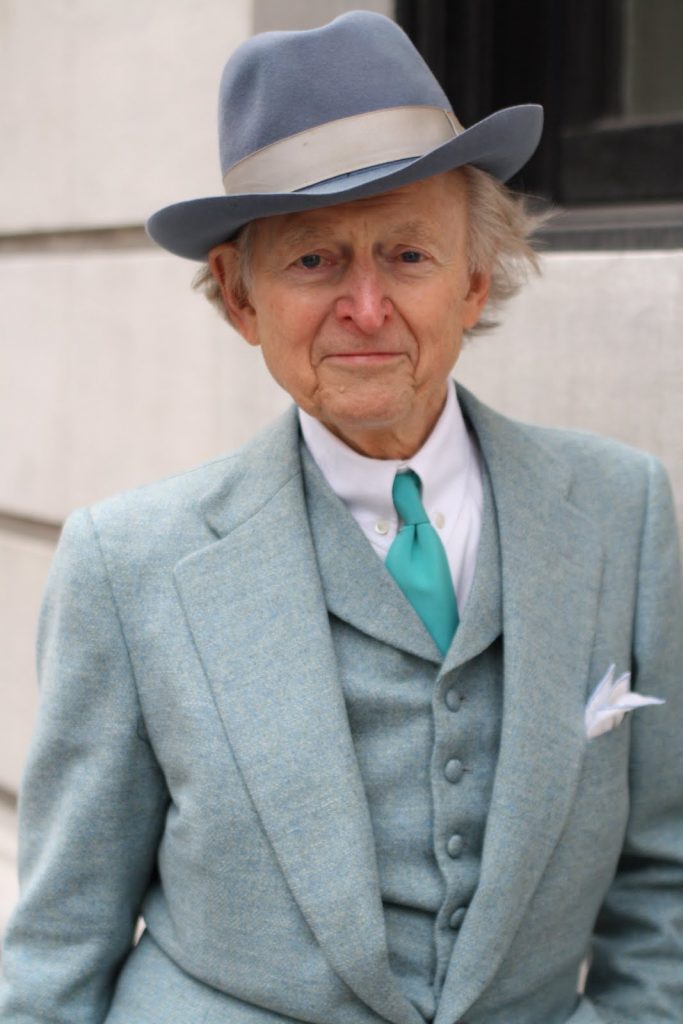
A short while ago a news alert popped up on my computer informing me of the death of Tom Wolfe, the writer and essayist of whom I have only occasionally thought about in recent years, except to casually wonder; “Whatever became of Tom Wolfe?,” yet never bothering to google his whereabouts — dead or alive.
The moment I read that splashing news alert, I was beset by ripples of nostalgia for his early works in the sixties, when I discovered that cerebral gland within my skull that found his style of journalistic prose so appealing and entertaining. But the oddest moment of recollection was when I realized that his impression ran so deep within me that I had not realized his seminal influence on my own style of writing. So here I go….again.
Before 1997, save for a series of countless letters of lovelorn correspondence written in the early 70’s, I had written barely a word of anything that might aspire to paragraph. Back then, when long distance telephony was murderously expensive, my foray into epistolary courting and long distance sparking was a necessary component of maintaining my first serious romance with a middle-Tennessee college freshman I met while she was here on summer break, which culminated in marriage, two children, and an extraordinary and complicated journey toward signed papers, the rap of a judge’s gavel, and separate walks to separate cars in separate lots. But never separate lives, as fate had secretly decreed.
The first Tom Wolfe book I read was “The Electric Kool-aid Acid Test” which chronicled the adventures of the novelist, Ken Kesey, and his band of Merry Pranksters, and the hippy counterculture emanating from the San Francisco area of the mid-sixties. Wolfe’s technicolor style of bombastic imagery and run-on sentences of psychedelic sharpshooting in that book contributed much to the emerging New Journalism which paved the way for the swaggering Gonzo journalism of Hunter S Thompson’s double-holstered, saloon-door-swinging incursion into the annals of bloodshot perspectives and mainstream notoriety.
Wolfe’s hilarious essays in “Radical Chic and Mau-mauing the Flak-Catchers” and his lean paperback assault on the mangrovian tangle of effete pretensions that dominated the blue-blood Art world, in “The Painted Word.” They all tickled the nut-sack of my frontal lobes; re-calibrating cynical periscopic views of politics, culture, and the absurdist intellectualism of elitists and revolutionaries alike. But in the end it was Wolfe’s wellspring of sardonic humor that most strongly inspired me.
By the mid-seventies I had stopped reading fiction — by and large — and gravitated towards the autodidactic benefit of nonfiction, and I faithfully maintained a subscription to either Time or Newsweek to stay informed, until a few years ago when those organizations, running aground on the shoals of the internet, basically went to shit. I credit those decades of news magazines with helping me learn how to effectively string words together with an appreciation for concise structure and vocabulary. By 1997, I had begun putting thoughts and words together in internet music forums, where I was invited to contribute some content to a cult-favorite music group’s website.
That site’s webmaster, himself a prolific writer and my de facto mentor, used to refer encouragingly to my forum soliloquies and web articles as “verbal fireworks.” Be that as it may, it was only today that I realized where all of that combusting “snap, crackle, and pop” originated. It was in those early years, occasionally spent engrossed in pages lit up by a pyrotechnic master, Tom Wolfe.
I could have done worse I suppose, but there is no denying the fact that I never did and never will look as good as that guy in a three-piece suit and hat. When asked once what he called his signature sartorial style, he quipped, “Neo-pretentious.”
Thanks Tom. You just gave me a suitably self-effacing descriptor for my writing style. I could have done worse.